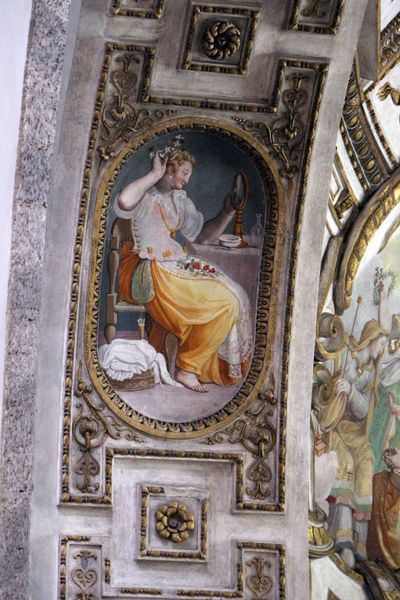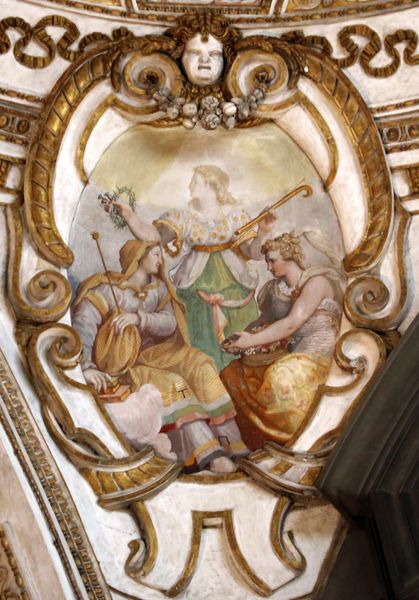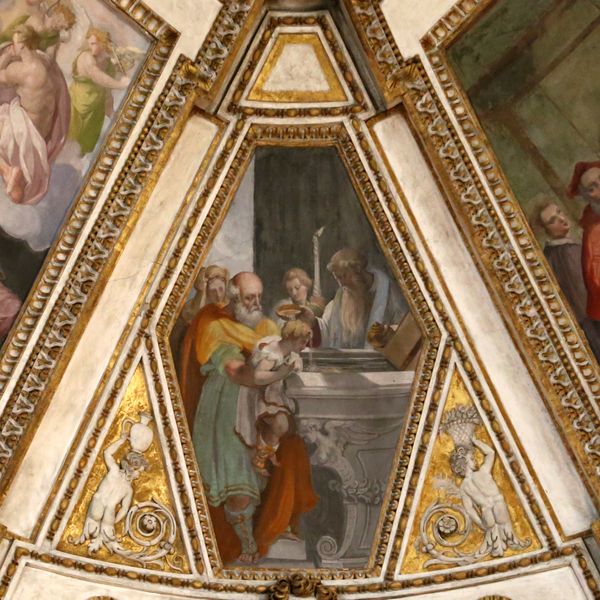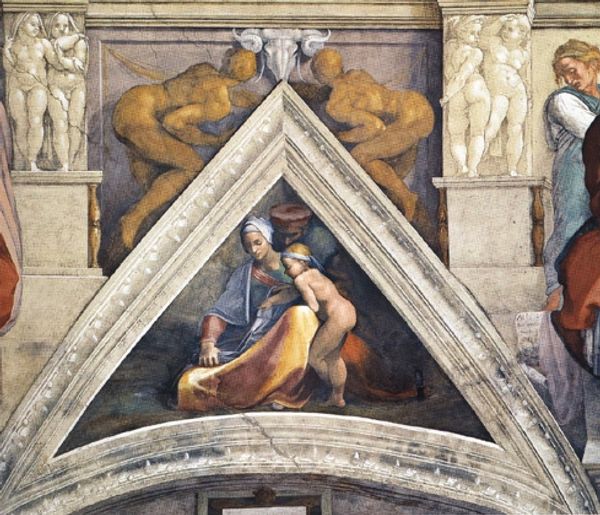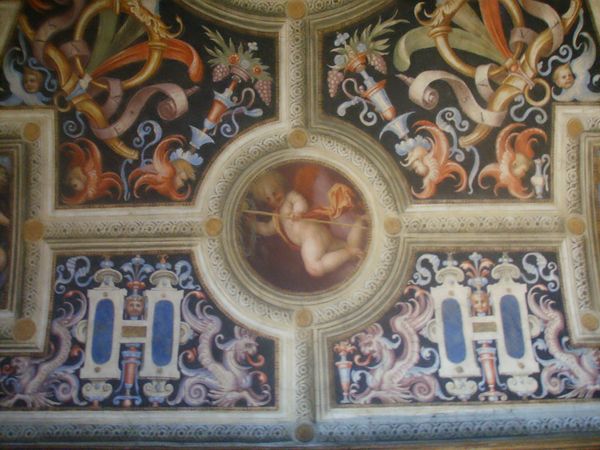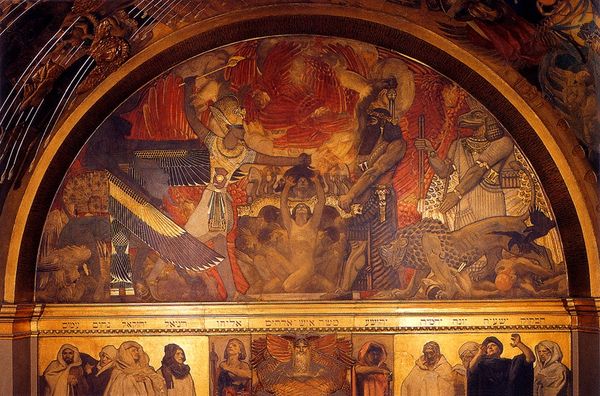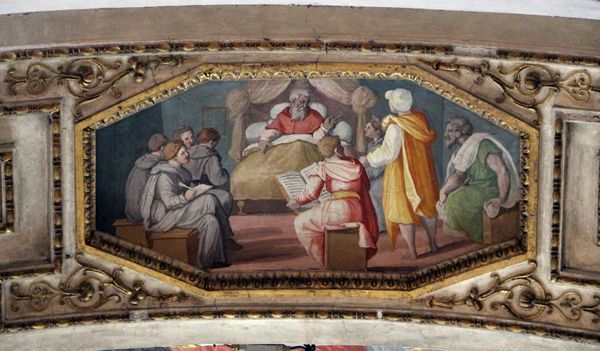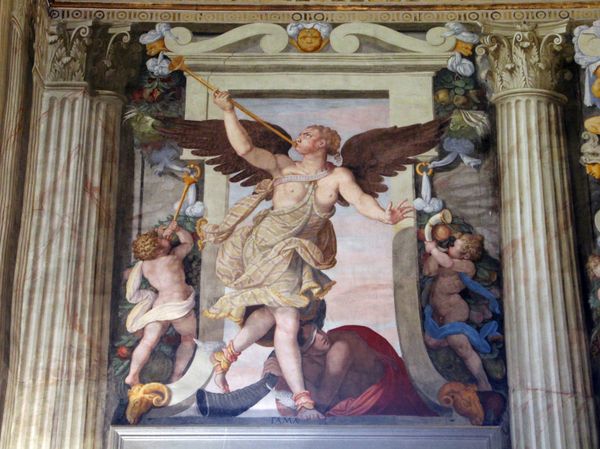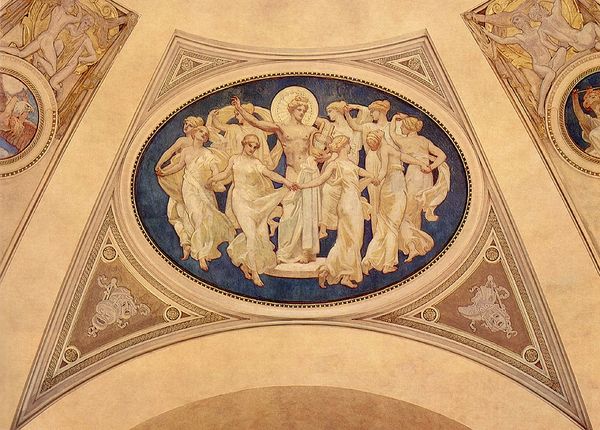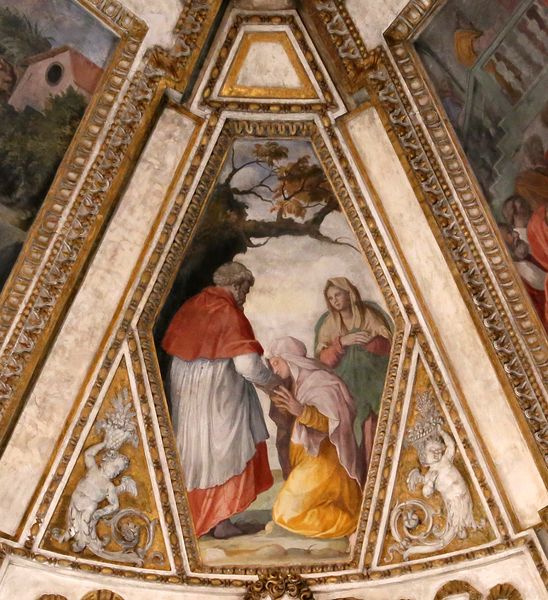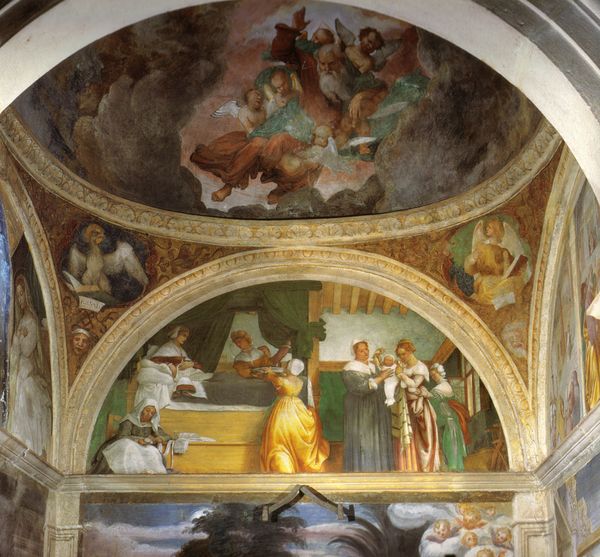
painting, fresco, mural
#
allegory
#
painting
#
mannerism
#
figuration
#
historic architecture
#
fresco
#
11_renaissance
#
traditional architecture
#
history-painting
#
academic-art
#
mural
#
historical building
Copyright: Public domain
Editor: Here we have Alessandro Allori's fresco from 1577, *Stories of St. Jerome,* currently residing in Santa Maria Novella. There's a striking artificiality to it. The figures seem posed, and the colour palette feels intentionally heightened. What social currents were influencing such artistic choices at this time? Curator: Indeed, this artifice is characteristic of Mannerism, reflecting the socio-political climate of the late Renaissance in Florence. The Medici family's increasing control led to a preference for art that displayed sophisticated skill and erudition, rather than direct emotional connection or naturalism. Notice how the figures are compressed into a relatively small space and their gestures feel theatrical? This consciously departs from High Renaissance ideals of balance and harmony and the emphasis on naturalism and accessibility. Editor: So, it’s a deliberate distancing from the everyday? An attempt to elevate art beyond the reach of the common person? Curator: Precisely. Think of it as visual rhetoric for a society grappling with changing power dynamics. The church, too, plays a part. These frescoes are located within a Dominican church. How do you see the visual program working for or against traditional values? Consider the roles, gender representations, classicizing detail… Editor: That's fascinating. So, while ostensibly religious, the fresco subtly reinforces the power structures of the time by displaying intellectual prowess and distancing itself from the more egalitarian ideals. I hadn't considered the Medici influence so directly. Curator: And this detachment, and heightened refinement is intended for the upper class. Knowing who and where the artwork will be appreciated is critical. It certainly has an impact on how an artist designs and composes the artwork, to please their intended viewership. This piece reveals much about the era’s complex interplay between art, power, and religion. Editor: Thank you! It's changed my view. It really helps to frame the artwork’s original viewership as the artwork takes its final form. It is the meeting between the viewer and artwork that forms an ongoing exchange between then and now.
Comments
No comments
Be the first to comment and join the conversation on the ultimate creative platform.

